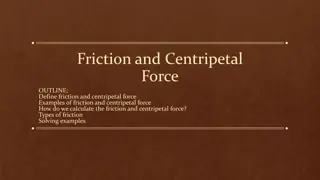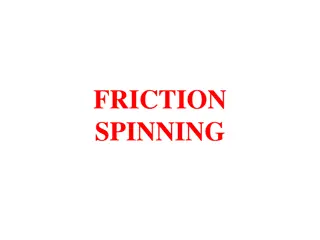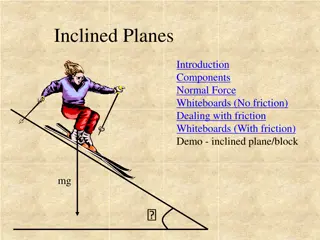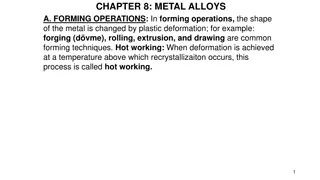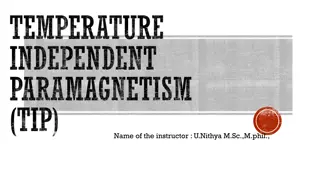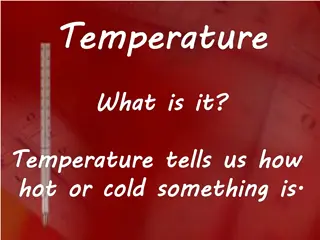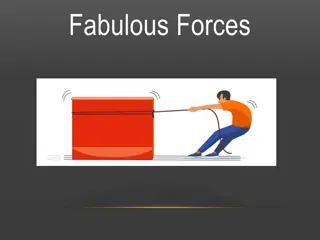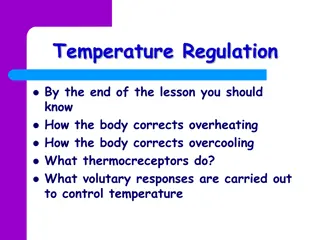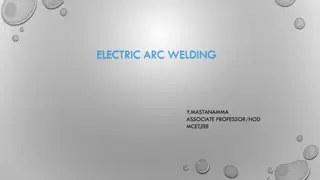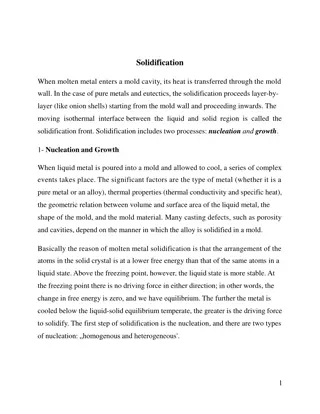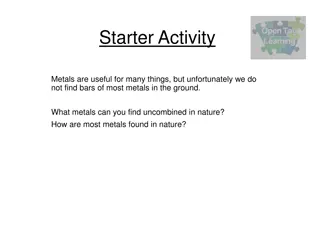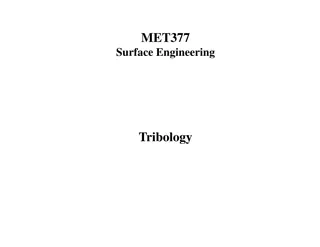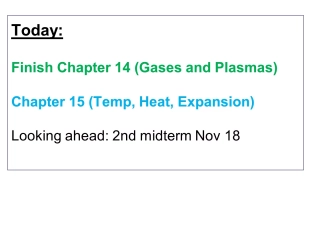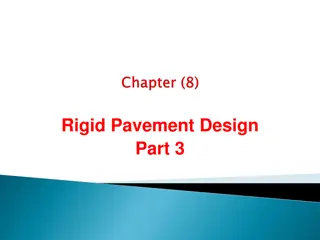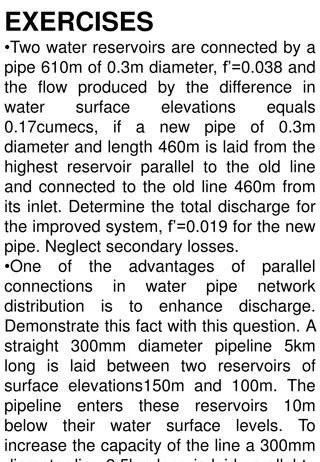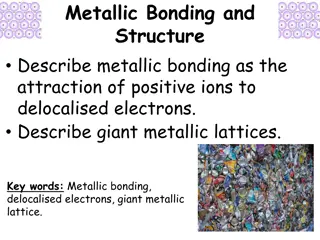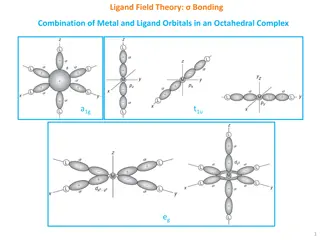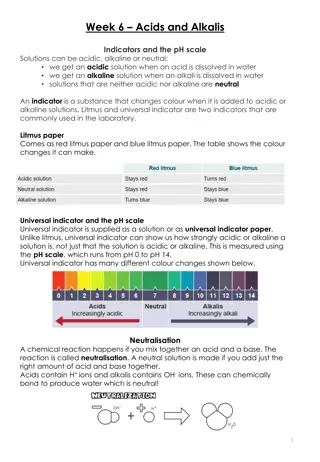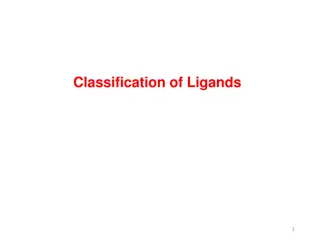Understanding Temperature and Friction in Metal Forming Processes
Metal forming processes are influenced by temperature and friction. At different temperature ranges, such as cold, warm, and hot working, the mechanical properties and forming behaviors of metals vary significantly. Cold working offers advantages like higher accuracy and strength, while warm working allows for more intricate geometries. Hot working, on the other hand, enables significant shape alterations with lower forces required. Each temperature range has its advantages and limitations in metal forming operations.
Download Presentation

Please find below an Image/Link to download the presentation.
The content on the website is provided AS IS for your information and personal use only. It may not be sold, licensed, or shared on other websites without obtaining consent from the author. Download presentation by click this link. If you encounter any issues during the download, it is possible that the publisher has removed the file from their server.
E N D
Presentation Transcript
Temperature And Friction In Metal Forming LECTURE FIVE
Temperature in metal forming For any metal, the values of K and n depend on temperature. Strength and strain hardening are both reduced at higher temperatures. These property changes are important because they result in lower forces and power during forming. In addition, ductility is increased at higher temperatures, which allows greater plastic deformation of the work metal. For these reasons the forming processes can be classified as:
Cold Working (also known as cold forming) is metal forming performed at room temperature to 0.3Tm. Significant advantages of cold forming compared to hot working are: (1) greater accuracy, meaning closer tolerances can be achieved (2) better surface finish; (3) higher strength and hardness of the part due to strain hardening (4) grain flow during deformation provides the opportunity for desirable directional properties to be obtained in the resulting product; (5) No heating of the work is required, which saves on furnace and fuel costs and permits higher production rates. There are certain disadvantages or limitations associated with cold forming operations: (1) Higher forces and power are required to perform the operation. (2) Care must be taken to ensure that the surfaces of the starting workpiece are free of scale and dirt. (3) Ductility and strain hardening of the work metal limit the amount of forming that can be done to the part.
Warm working the term warm working is applied to this second temperature range. The dividing line between cold working and warm working is often expressed in terms of the melting point for the metal. The dividing line is usually taken between (0.3 Tm- 0.5 Tm), where Tm is the melting point for the particular metal. The advantages of warm working over cold working are: (1) Lower forces and power. (2) More intricate work geometries possible. (3) Need for annealing may be reduced or eliminated. Hot Working Hot working (also called hot forming) involves deformation at temperatures above the recrystallization temperature. The recrystallization temperature for a given metal is about one-half of its melting points on the absolute scale. The range of hot working it s about (0.5Tm-0.75Tm). The advantages of the hot working are: (1) shape of the workpart can be significantly altered (2) lower forces and power are required to deform the metal (3) metals that usually fracture in cold working can be hot formed (4) strength properties are generally isotropic because of the absence of the oriented grain structure typically created in cold working (5) no strengthening of the part occurs from work hardening
Disadvantages of hot working include: (1) Lower dimensional accuracy. (2) Higher total energy required (due to the thermal energy to heat the workpiece). (3) Work surface oxidation (scale). (4) Poorer surface finish. (5) Shorter tool life.
Isothermal forming refers to forming operations that are carried out in such a way as to eliminate surface cooling and the resulting thermal gradients in the workpart. It is accomplished by preheating the tools that come in contact with the part to the same temperature as the work metal. The variations in temperature and strength in different regions of the workpiece cause irregular flow in metal during deformation, leading to high residual stresses and possible surface cracking. Friction and lubricants Friction in metal forming arises because of the close contact between the tool and work surfaces and the high pressures that drive the surfaces together in these operations In most metal forming processes, friction is undesirable for the following reasons: (1) Metal flow in the work is retarded, causing residual stresses and sometimes defect. (2) Forces and power to perform the operation are increased. (3) Tool wear can lead to loss of dimensional accuracy. If the coefficient of friction becomes large enough, a condition known as sticking occurs. Sticking in metalworking (also called sticking friction) is the tendency for the two surfaces in relative motion to adhere to each other rather than slide
Considerations in choosing an appropriate metalworking lubricant include: (1) Type of forming process (rolling, forging, sheet metal drawing, and so on). (2) Whether used in hot working or cold working. (3) Work material. (4) Chemical reactivity with the tool and work metals and Toxicity (5) Ease of application. (6) Flammability. (7) Cost. Lubricants used for cold working operations include mineral oils, fats and fatty oils, water-based emulsions, soaps. Hot working is sometimes performed dry for certain operations and materials (e.g., hot rolling of steel and extrusion of aluminum). When lubricants are used in hot working, they include mineral oils, graphite, and glass.


